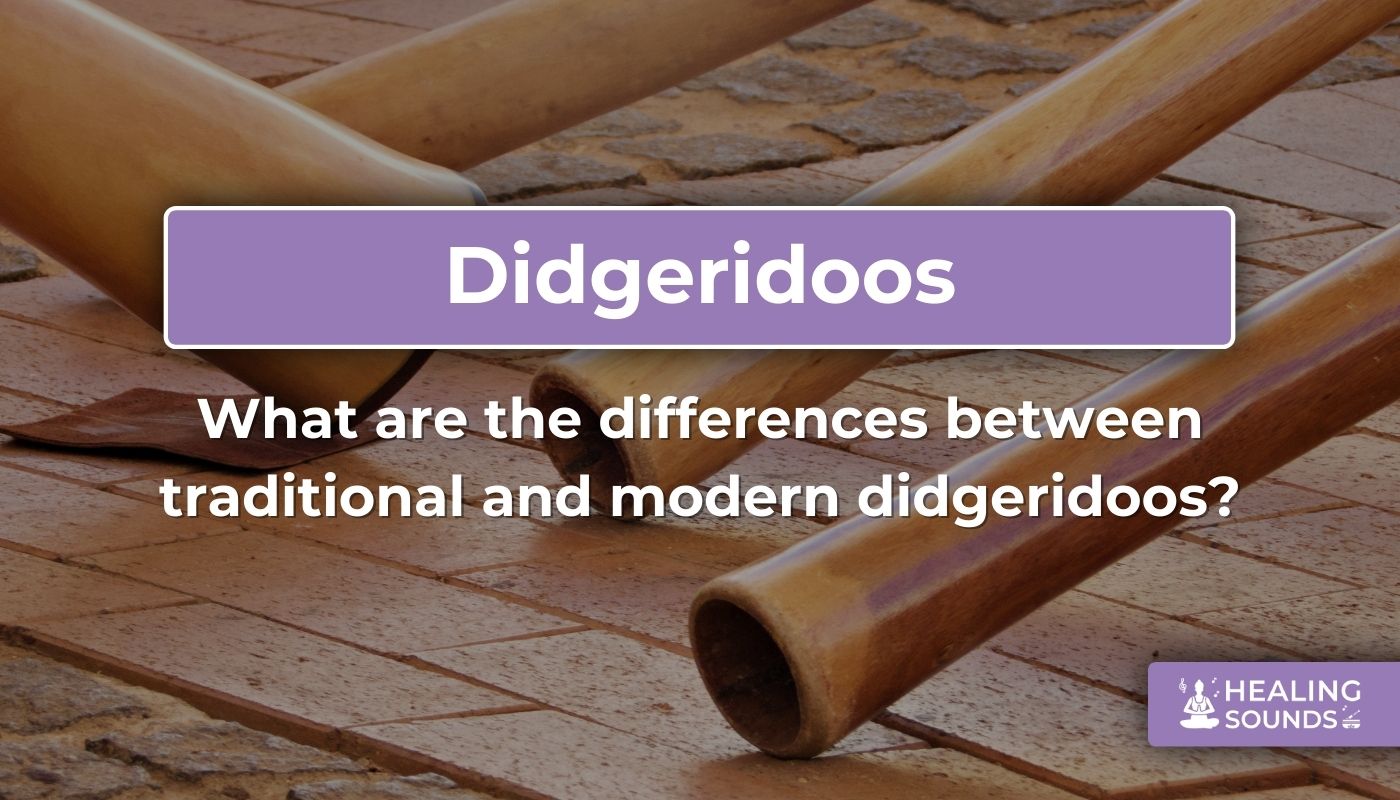The didgeridoo, an ancient wind instrument resonating with the sounds of the earth, holds a unique place in both cultural heritage and modern music. Understanding the distinctions between traditional vs modern didgeridoos is key for anyone drawn to its captivating drone, whether you're a music enthusiast, a sound healer, or simply curious about this remarkable Aboriginal instrument. This exploration will guide you through the ancient roots and contemporary innovations, helping you appreciate the nuances of the didgeridoo sound and choose the instrument that resonates most with you.
The Soul of Tradition: Understanding the Aboriginal Didgeridoo
The story of the didgeridoo begins in Northern Australia, stretching back thousands of years. It's more than just wood; it's a voice for storytelling, ceremony, and connection to the Dreamtime for Aboriginal peoples. Appreciating a traditional didgeridoo means acknowledging this deep cultural significance.
What is a Traditional Didgeridoo?
Authentic traditional didgeridoos are typically crafted from specific eucalyptus tree trunks or limbs, naturally hollowed out by termites (termite boring). This natural process is crucial – Aboriginal artisans carefully select these specific pieces, respecting the collaboration between nature and craftsmanship.
The crafting process itself is meticulous. The bark is stripped, the interior cleaned and smoothed, and the ends shaped for playing comfort and optimal resonance. Often, these instruments are adorned with intricate paintings using traditional ochres, depicting clan designs, ancestral beings, or Dreamtime stories, embedding deep cultural meaning into the instrument itself.
The Unique Sound of Tradition
The magic of a traditional didgeridoo lies in its sound. The irregular, organic shape of the termite-hollowed bore creates a rich, complex sonic tapestry. Expect deep, resonant drones filled with vibrant overtones and a slightly earthy buzz. Each eucalyptus didgeridoo crafted traditionally possesses a unique voice, reflecting the specific tree and the land it came from. The didgeridoo sound produced is often described as primal and grounding.
Yidaki vs. Didgeridoo: A Note on Terms
While "didgeridoo" is the commonly recognised term globally, it's important to note regional Aboriginal language names. "Yidaki" is the specific name used by the Yolngu people of Northeast Arnhem Land for their type of didgeridoo, which has distinct playing styles and cultural protocols associated with it. Understanding terms like yidaki adds another layer to appreciating the instrument's diverse origins.
The Rise of the Modern Didgeridoo
As the didgeridoo gained global popularity, innovation led to the development of modern variations. These instruments aim to capture the essence of the didgeridoo while offering practical advantages using contemporary materials and manufacturing techniques.
Innovation in Materials and Design
Modern didgeridoos break free from the sole reliance on termite-hollowed eucalyptus. They can be crafted from a variety of woods like teak, mahogany, or bamboo, as well as synthetic materials like PVC, fiberglass, carbon fiber, or even hemp composites. This experimentation allows for different tonal qualities, weights, and visual aesthetics.
Modern didgeridoo design also explores innovative shapes. Compact, travel-friendly versions like spiral or box didgeridoos allow players to experience the instrument's unique sound without the length of a traditional one. Tunable didgeridoos offer versatility for playing in different musical keys.
Benefits of Modern Didgeridoos
Modern instruments offer several compelling advantages, particularly for beginners or travelling musicians:
- Portability: Lighter materials and compact designs make them easier to transport.
- Durability: Materials like fiberglass or PVC are less susceptible to cracking or environmental changes than traditional wood.
- Consistency: Manufactured bores often produce a more predictable and stable drone, which can be helpful for learning circular breathing.
- Accessibility: Often more affordable and readily available than authentic traditional instruments.

Portable Spiral Didgeridoo - Australian Instrument
$149.90 $209.90
Experience the captivating drone anywhere with this compact spiral design, a prime example of modern didgeridoo design innovation.
Explore PortabilityTraditional vs Modern Didgeridoos: Key Differences
Choosing between a traditional and modern didgeridoo involves understanding their core contrasting features. Let's break down the crucial distinctions:
Sound Profile Comparison
The most significant difference lies in the didgeridoo sound. Traditional didgeridoos offer complex, organic, resonant tones rich in overtones, influenced by the natural wood grain and irregular bore. Modern didgeridoos tend to have a cleaner, more focused, and consistent sound due to precisely engineered bores. The choice depends on whether you seek earthy complexity or predictable clarity.
Authenticity and Craftsmanship
Authenticity is paramount with traditional didgeridoos. They are intrinsically linked to Aboriginal culture, land, and specific crafting traditions passed down through generations. Modern instruments, while potentially high quality, are products of contemporary manufacturing, lacking that direct ancestral connection unless specifically crafted by Indigenous artisans using modern methods but traditional knowledge.
- Material: Termite-hollowed Eucalyptus vs. Various woods, synthetics.
- Sound: Complex, organic, rich overtones vs. Clean, consistent, focused.
- Craftsmanship: Natural process, cultural art vs. Manufacturing, innovative design.
- Authenticity: Deep cultural connection vs. Modern interpretation/utility.
Playability and Learning Curve
Modern didgeridoos with smooth, uniform bores can sometimes be easier for beginners learning circular breathing and basic techniques. The unique variations in traditional instruments might present a slightly steeper learning curve, but mastering one offers a deep connection to its individual voice.
Choosing Your Didgeridoo: Which Path to Take?
Ultimately, the "better" didgeridoo depends entirely on your individual needs and intentions. There's no single right answer when comparing traditional vs modern didgeridoos.
Considering Your Goals
Ask yourself why you are drawn to the didgeridoo:
- Cultural Connection: If feeling a deep link to the instrument's origins and Aboriginal culture is paramount, seek an authentic traditional didgeridoo, ideally sourced ethically.
- Sound Healing: Both types can be used, but the complex overtones of a traditional instrument may offer unique therapeutic qualities. Modern ones provide consistency for specific vibrational work.
- Musical Performance: Modern didgeridoos might offer advantages in tuning, durability for travel, and predictable sound for ensemble playing.
- Learning/Accessibility: A well-made modern didgeridoo can be a great starting point due to ease of play and lower cost.
Explore Our Diverse Didgeridoo Collection

Didgeridoo Australian Teak Wood Instrument
$149.90
$209.90
Crafted from teak, this modern didgeridoo offers a warm, consistent tone ideal for sound healing practices. Learn more ➔

Portable Australian Didgeridoo - Mahogany Wood
$179.90
$249.90
Enjoy the rich sound of mahogany in a conveniently portable format, blending traditional material feel with modern didgeridoo practicality. Learn more ➔

Didgeridoo Australian Instrument for Sound Healing
$159.90
$219.90
Made from eucalyptus wood, this instrument offers a nod to traditional materials while providing reliable performance for sound healing and yoga. Learn more ➔
Respecting Cultural Heritage
Regardless of your choice, respecting the cultural origins of the didgeridoo is crucial. If purchasing a traditional instrument, ensure it's ethically sourced, benefiting the Aboriginal artists and communities directly. Even when playing a modern didgeridoo, understanding its roots enriches the experience and fosters appreciation. Learning more about Aboriginal culture is always encouraged. Resources like the Australian Institute of Aboriginal and Torres Strait Islander Studies (AIATSIS) offer valuable insights.
Conclusion
The journey into the world of the didgeridoo offers a choice between the deep roots of ancient tradition and the practical innovations of modern design. Traditional didgeridoos connect us to millennia of culture and offer unparalleled organic sound, while modern didgeridoos provide accessibility, portability, and consistency. Neither path is superior; the best choice aligns with your personal connection, musical goals, and respect for the instrument's heritage.
Whether you seek the complex voice of a termite-hollowed eucalyptus didgeridoo or the reliable tone of a contemporary model, Healing Sounds offers a curated selection to explore. Embrace the journey and discover the powerful resonance of the didgeridoo.
Frequently Asked Questions about Traditional vs Modern Didgeridoos
Yes, primarily categorized as traditional (usually termite-hollowed eucalyptus, culturally significant) and modern (made from various woods or synthetics, often focusing on portability or specific sound qualities). Within traditional types, there are regional variations like the Yidaki.
Traditionally, in many, but not all, Aboriginal cultures where the didgeridoo originates, it is primarily played by men for ceremonial purposes. Cultural protocols vary significantly between different Aboriginal groups, and respecting these specific traditions is important.
A "real" or authentic traditional didgeridoo is typically made from termite-hollowed eucalyptus by an Aboriginal artisan from the relevant region. Look for information about the artist, the wood source, and ethical sourcing practices. Modern didgeridoos are "real" instruments but differ in materials and cultural connection.
Didgeridoo is the general, widely known term. Yidaki is the specific name used by the Yolngu people of Northeast Arnhem Land for their traditional instrument. Yidaki often have specific physical characteristics and playing techniques distinct from other regional didgeridoos.
Key differences include: Materials (eucalyptus vs. varied woods/synthetics), Sound (complex/organic vs. consistent/clean), Craftsmanship (natural/cultural vs. manufactured/designed), Portability/Durability (modern often excels here), and Cultural Connection (inherent in traditional, interpreted in modern).

